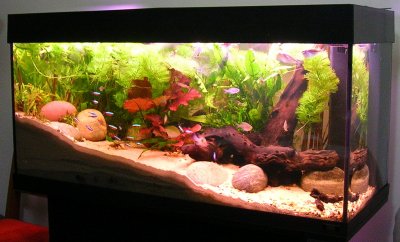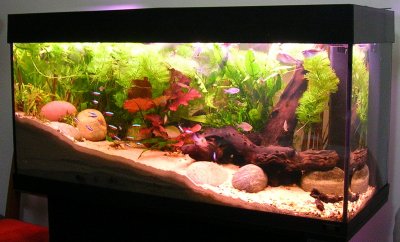Last week, we talked about how to pick saltwater fish for your new reef tank. This week, we are going to build on that and explain how to quarantine your new fish before adding them to your tank.
Fish are vulnerable to a wide range of diseases they might catch at different points they go through in the supply chain before reaching you (collector, wholesaler, LFS…). Regardless of how diligent these commercial operators are, chances are that the fish will still carry disease. Once these diseased fish are added to your tank, it can affect your entire aquarium and take the lives of all your fish! So without a doubt, quarantining new fish is an absolute must.
There are many different ways to quarantine your new fish, but for the sake of simplicity, we will offer our own preferred method in this article.
You will need the following equipment:
- Quarantine tank: A 10 gallon (40L) aquarium is enough for the majority of small and medium-size fish.
- Heater: Any reliable heater will do.
- Thermometer: A mercury thermometer would do the job.
- Filtration: Quarantine systems do not need complex filtrations. All you require is a simple sponge filter driven by an air pump.
- Refractometer: This will give you accurate salinity measures.
- Test kits: The two basic test kits you will need during the quarantine process are ammonia and copper. Those of you who own a ReefBot can use it to make the testing more convenient.
- Medicine: There are many options available for treatment. Prazipro, Maracyn Two, and Cupramine are very effective and work well together.
- Decorations (for shelter): A variety of PVC pipes/fittings is sufficient. Since you will treat your tank with medication, do not use live rock.
- Light: No need for anything fancy. Any lamp would work, as long as it doesn’t overheat the water.
- Salt mix and good (e.g. RO/DI) freshwater. Premix 5 to 10 gallons to have them ready for emergency water changes.
- Position your sponge filter in your main aquarium or sump so that it promotes nitrifying bacteria for a minimum of 2 weeks (the longer the better). There is no need to run the air pump during this time.
- When you are ready to buy new fish, first prepare your quarantine tank. Fill the quarantine tank with saltwater to match the salinity of your display tank. Move the sponge filter from your display tank to your quarantine tank. Run the air pump during this time. Setup the heater and thermometer. Match the temperature to your main tank. Add the decorations.
- Add your new fish to your quarantine tank and then let them rest for a day. You can carry out light feeding several hours after introducing the fish. The fish should be introduced to similar temperature, PH, and salinity as the water bag they came in.
- On day two, medicate with Prazipro. Follow the manufacturer's directions. Prazipro is pre-solubilized praziquantel, a gentle medicine that will cure the fish of flukes and worms.
- On day seven, carry out a 50% water change with new saltwater only. Make sure the new water is the same salinity and temperature as your quarantine tank.
- Watch your fish over the next two weeks as the medicine does its job. If you see any signs of bacterial infection such as fin rot or cloudy eyes, use Maracyn Two. Maracyn Two is a broad-spectrum antibiotic that is safe to use with the other medicines mentioned earlier. On the other hand, if you see signs of white spots or similar symptoms, use the Cupramine.
- 21 days after you first added your new fish to the quarantine tank, if the fish look healthy and are feeding, then they are ready to be introduced to your display tank
Download the Reef Kinetics Cloud Controller App:


Last edited:













